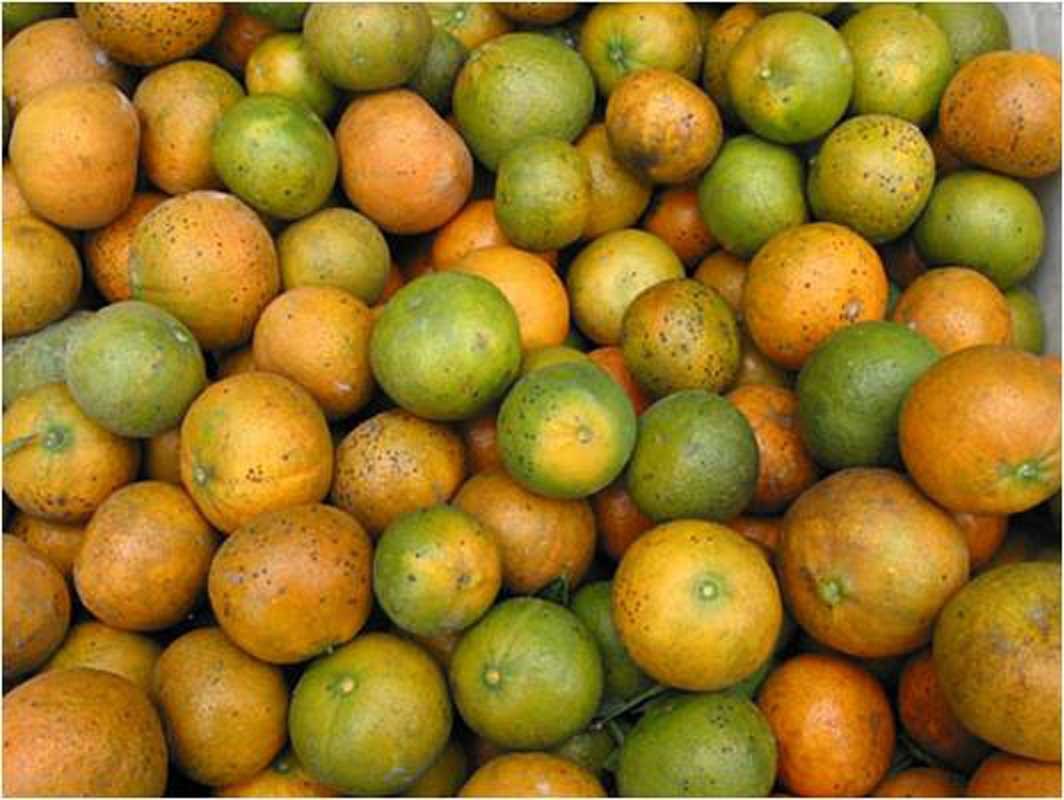Like the almond growers buying their own bees, citrus packers will start growing their own oranges instead of relying on citrus growers. Stories of the fatal bacterial disease, citrus greening, often focus on growers, who have seen their annual harvest decline by more than 70 percent because of greening.
Just as severely impacted have been Florida’s fresh citrus packinghouses, which buy a large portion of Florida’s annual orange, grapefruit and tangerine harvests and sell them to supermarket chains and retailers across the U.S. and ship to export markets, including Japan, Canada and Europe.
In the 2000-01 citrus season, Florida had 106 citrus packinghouses operating across citrus belt, which runs roughly south of Interstate 4, according to the Florida Department of Citrus. That was before greening was first confirmed in Florida in the fall of 2005.
Each of the top 24 packinghouses sold more than 1 million cartons of fresh citrus that season, according to the Lakeland-based Citrus Administrative Committee, a federal agency that regulates the industry. All packinghouses combined shipped 55 million cartons.
The 2016-17 season saw only 26 packinghouses operating in Florida, less than a quarter of the total from 16 seasons earlier, the statistics show.
Among them, only one, Egan Fruit Packing LLC in Fort Pierce, will ship more than 1 million cartons, and the industry output in 2016-17 will total just more than 12 million cartons, a 78 percent decline during the 16 seasons.
Few expect things to improve in the near future, which is why several of the remaining packinghouses, including Ben Hill Griffin Inc. in Frostproof, have already announced they won’t re-open for the 2017-18 season.
“We don’t have enough fruit to efficiently run the plant we have,” said Dennis Broadaway, general manager of the packinghouse operated by the Haines City Citrus Growers Association. “We’ve been sitting on this surplus equipment, thinking things may turn around. Obviously, it’s not going to turn around.”
Broadaway was referring to equipment on two of the three packing lines, which have been idle for the past three seasons, he said.
The Haines City Citrus Growers Association has put its packinghouse up for sale, although it expects to run the facility in 2017-18 and perhaps the following season until it finds a buyer, Broadaway said.
As Broadaway stated, locking up a supply of fruit is the key to survival until scientists can find a way to overcome citrus greening’s damaging effects.
Like the Haines City Growers, some packinghouses ensure supply by signing long-term agreements with independent growers that commit a certain portion of their harvest to that company. As citrus growers leave the industry, particularly small and medium-sized growers with less than 1,000 grove acres, those packinghouses are left with finding uncommitted fruit on the open market.
Others hope to survive by pursuing a grow-your-own strategy. That means packing mostly fruit from your own groves like the Peace River Packing Co. in Fort Meade.
“Our model is we have to secure our own fruit supply, and we’re planning aggressively to meet that goal,” said General Manager Larry Black. “We’ve increased the acreage we’re growing under from 1,800 acres to 2,700 acres in the last 10 years.”
About 80 percent of the oranges, grapefruit and tangerines that run through the Peace River packinghouse come from the company’s own groves, he added.
That percentage has increased in recent seasons because the supply from independent, or third-party, growers has dried up not just for Peace River but across the industry, Black said.
“We grew our third-party business in the past, but in the last three years that supply has really diminished,” he said.
Even with aggressive new plantings, however, the Peace River packinghouse’s output has fallen from more than 1 million cartons in 2008-09 and the following season to about 400,000 this season, Black said.
In addition to a diminishing third-party market, the contraction stems from the greening-related production declines in its mature groves, the same declines seen across Florida, he said. In addition, new groves don’t produce marketable fruit until at least the third season after planting.
“Over the next five years, we’re going to focus on rehabilitating groves that have not been productive,” Black added.
That means Peace River won’t be increasing its acreage, but much of that acreage will have newer, more productive groves, thus increasing supplies.
Another packinghouse pursuing a grow-your-own strategy is operated by the Hunt Bros. Cooperative, which has more than 5,000 grove acres in Polk County and the Immokalee area.
Frank Hunt III, president of the family company, agreed the supply of third-party fruit has dried up.
“In recent years, we haven’t purchased anything,” he said. “My volume is off 40 percent from what it was, but because I control my fruit, we are able to maintain packinghouse volume.”
Hunt Bros. has shipped 889,936 cartons of fruit through April 30, the second highest total in the state, according to Citrus Administrative statistics. Still, that’s down from 1.4 million cartons in the 2013-14 season.
One hope for maintaining supplies, at least in the near term, is the success of some new tangerine varieties that appear to tolerate greening infection better than the traditional varieties, Black said. The trees still become infected, but greening symptoms such as the smaller size of the fruit and increased pre-harvest drop appear to be not as severe.
About 70 percent of Florida’s “specialty citrus” crop, including tangerines and tangelos, is sold on the fresh market.
The U.S. Department of Agriculture forecasts the 2016-17 specialty harvest at 1.63 million boxes. A carton of citrus, the standard packinghouse measure, equals a half-box.
In addition to tolerating greening, the new specialty varieties are easy to peel and are seedless or nearly so, Black said. Both qualities are in high demand among U.S. consumers.
Shipments of the new varieties have increased from 33,061 cartons in 2013-14 to 258,289 cartons this season, a nearly eight-fold increase, according to Citrus Administrative statistics. The agency projects that total to rise to 400,000 cartons next season.
One popular new variety is the Sugar Belle tangerine, developed by breeders at the Citrus Research and Education Center in Lake Alfred and released to commercial growers in 2009.
Because of high demand from growers, Sugar Belle ranked second among all specialty trees grown last year in Florida citrus nurseries, according to Fred Gmitter, professor of citrus genetics and breeding at the Lake Alfred center who helped develop the variety.
“There’s been a high interest in new varieties from Florida growers,” Black said. “The Sugar Belle and other new releases are showing some encouraging signs against greening.”
Source: www.kansas.com









